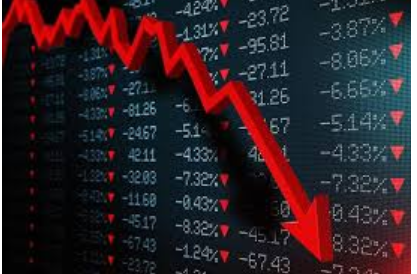Morgan Stanley venter en generel nedgang på aktiemarkederne i den kommende tid, og det skyldes, at der ventes lavere indtjening fra virksomhederne. Inflationen er nok ved at toppe, men virksomhederne får mere modvind, og den negative udvikling på aktiemarkederne i sidste uge er en bekræftelse på, at markederne venter, at vi står over for en is-tid, som banken udtrykker det. Det går nedad. Men hvor meget? Morgan Stanley mener, at S&P 500-indekset kommer under 4000, men det er allerede kommet ned på ca. 4100, og det toppede i ca. 4800 ved årsskiftet. Det er altså tilbage på niveauet under pandemien, men ligger stadig markant over niveauet fra før pandemien.
U.S. Stocks and the Oncoming Slowdown
As U.S. equity markets digest higher inflation and a more hawkish Fed, the question is when this will turn into a headwind for earnings growth.
As equity strategists our primary job is to help clients find the best areas of the market, at the right time. Over the past year our sector and style preferences have worked out very well as the market has gone nowhere.
However, the market has been so picked over at this point, it’s not clear where the next rotation lies. When that happens, it usually means the overall index is about to fall sharply, with almost all stocks falling in unison. In many ways, this is what we’ve been waiting for as our fire and ice narrative, a fast tightening Fed into the teeth of a slowdown, comes to its conclusion.
While our defensive posture since November has been the right call, we can’t argue for absolute upside anymore for these groups given the massive rerating that they’ve experienced in both absolute and relative terms. In many ways, this is a sign that investors know a slowdown is coming and are bracing for it by hiding in these kinds of stocks.
In our view, the accelerated negative price action on Thursday and Friday last week may also support the view we are now moving to this much broader sell off phase. Another important signal from the market lately is how poorly materials and energy stocks have traded, particularly the former. To us, this is just another sign the market’s realization that we are now entering the ice phase, when growth becomes the primary concern for stocks rather than inflation, the Fed and interest rates.
On that note, more specifically, we believe inflation and inflation expectations have likely peaked. There’s no doubt that a fall in inflation should take pressure off valuations for some stocks. The problem is that falling inflation comes with lower nominal GDP growth and therefore sales and earnings per share grow, too. For many companies, it could be particularly painful if those declines in inflation are swift and sharp.
Of course, many will argue that a falling commodity prices will help the consumer. We don’t disagree on the surface of that conclusion, but pricing has been a big reason why consumer oriented stocks have done so well. If pricing becomes less secure, the margin pressure we’ve been expecting to show up this year, may be just around the corner for such stocks, even as the consumer remains active.
We can’t help but think we are at an important inflection point for inflation, the mirror image of our call in April of 2020. At the time, we suggested inflation would be a big part of the next recovery and lead to extremely positive operating leverage and earnings growth. Fast forward to today, and that’s where we are. The question now is will that positive tailwind continue? Or will it turn into a headwind for earnings growth? Our view is that it will be more of the latter for many sectors and companies, and this is why we’ve been positioned defensively and in stocks with high operational efficiency.
The bottom line is that asset markets have been digesting higher inflation and a more hawkish fed path in reaction to that inflation. However, we are now entering a period when slowing growth will determine how stocks trade from here. Overall, the S&P 500 looks more vulnerable now than the average stock, the mirror image of the past year. We recommend waiting for the index to trade well below 4000 before committing new capital to U.S. equities.






